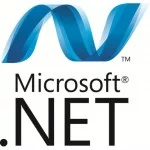.NET
Documentation regarding the Asynchronous Programming Model (APM) and the Event-based Asynchronous Pattern (EAP)
The Asynchronous Programming Model (APM) and the Event-based Asynchronous Pattern (EAP) are marked as legacy by Microsoft. The new pattern is called TAP – Task-based Asynchronous Pattern. So there is a lot to learn again. In this weekly MSDN Dive I want to show you some very interesting documentation and resources regarding parallel programming in the Microsoft .NET Framework.
Parallel Programming in the .NET Framework – Learn:
- Fundamentals of parallel computing in the .NET Framework.
- What the Task Parallel Library (TPL) is.
- What Parallel LINQ (PLINQ) is.
- About data structures for coordination of parallel operations.
- How everything relates to managed threads.
- …
Parallel Diagnostics Tools – Learn:
- How to debug concurrent operations in your application.
- About the debugging tools Visual Studio provides to find problems in parallel applications.
- How to use the parallel stacks window in Visual Studio.
- How to use the tasks window in Visual Studio.
- How to debug a parallel application.
- …
Task-based Asynchronous Pattern (TAP) – Learn:
- What the TAP is and how it works.
- What the differences between tasks and threads are.
- About parameters and return types in asynchronous operations.
- How to start asynchronous operations.
- How to cancel asynchronous operations.
- How to handle exceptions in asynchronous operations.
- How to report progress with the IProgress<T> interface.
- …
- Many resources on parallel computing and programming with the .NET Framework.
- Videos demonstrating the strength of parallel computing.
- Open Source projects embracing parallel computing.
- Links to blogs dealing with parallel computing.
- …
Enjoy the MSDN!
| Reference: | MSDN Dive – Week 38 from our NCG partner Robin Sedlaczek at the Robin Sedlaczek’s Blog blog. |


